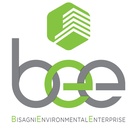BEST PRACTICES IN BUILDING MAINTENANCE IN TIMES OF COVID-19
 Mandarivaa
Mandarivaa
In reaction to COVID-19, many cities have applied strong measures such as the total closure of border crossings and lockdowns, among others, to slow down the spread of COVID-19. In spite of the pandemic, both the private and public sectors have taken precautionary measures and best practices in all establishments and enclosed spaces to minimize the public health risks of contracting the virus.
 With humans spending approximately 90% of our time indoors, it is imperative to ensure that indoor environmental conditions are healthy for its occupants. Due to the coronavirus outbreak, more attention has been paid to building design and operations and how these can help reduce the risk of bacterial or viral illness. Some of the steps that building managers and occupants can take to reduce the spread of pathogens are discussed below considering the best practices taken by industry leaders and guidelines made by several health organizations such as the CDC (Centers for Disease Control and Prevention). According to a webinar hosted by The Urban Land Institute, there are 6 main measures to consider before and during the outbreak:
With humans spending approximately 90% of our time indoors, it is imperative to ensure that indoor environmental conditions are healthy for its occupants. Due to the coronavirus outbreak, more attention has been paid to building design and operations and how these can help reduce the risk of bacterial or viral illness. Some of the steps that building managers and occupants can take to reduce the spread of pathogens are discussed below considering the best practices taken by industry leaders and guidelines made by several health organizations such as the CDC (Centers for Disease Control and Prevention). According to a webinar hosted by The Urban Land Institute, there are 6 main measures to consider before and during the outbreak:
ENSURE THE SAFETY OF STAFF AND SERVICE PROVIDERS
This is the first and foremost action item. Building managers and tenants must be free of any symptoms associated with the coronavirus such as fever, respiratory infection, cough among others before reporting to the workplace. All individuals must declare their travel itinerary within the past 14 days to determine the level of risk they might pose to others at the workplace. Finally, the building management or owner should inform all individuals to wear a surgical mask daily and have a daily body temperature check before entering an enclosed area.
ADOPT PRECAUTIONARY MEASURES
Building managers must apply strict operational procedures to reduce the probability of infection such as:
- Mandatory thermal scanning of all tenants and visitors before they enter the building.
- High-touch surfaces are disinfected with more frequency (handrails, doorknobs, lift buttons, etc.)
- Disinfected carpets can be placed at building entrances to minimize the introduction of possible pollutants or viruses.
- Place and make available the use hand sanitizers at all concierge counters
- Disinfect or replace air filters of the ventilation systems considering that viruses or bacteria use particulate matter to travel.
- Supply fresh air at all times and ensure a constant circulation of air
In addition to the aforementioned operational measures, create a channel to promote constant communication between occupants and building managers. Provide personal protection items, such as masks or disinfectants, and encourage individual best practices, such as frequent hand washing.
KEEP INFORMED, SHARE UPDATES AND MANAGE CUSTOMER SERVICE
Communication and information sharing are key when it comes to building management in public health emergencies. On one hand, it is fundamental to pay close attention to the most updated information available. On the other hand, such updates must be communicated to all the stakeholders involved so that all parties are aware of the situation and existing or future measures involved. Additionally, it is important to manage clients through open communications (e.g. social media) to internal corporate policies of digital communication, special arrangements, and human resource allocation.
RESPONSE COMMITTEE
Set up a response committee staff across different departments to make new policies and decisions on emergency cases. The objective is to quickly respond to changes and emergencies and promote communication transparency.
WORK ARRANGEMENTS
Once an organization establishes an approach to return to work during the outbreak, it should implement social distancing preventive measure when available, such as:
- Splitting teams to ensure work to be carried out in case the other teams need to be quarantine
- Support flexible hours to help staff avoid rush hour
- Increase or encourage home office work if possible to discourage people from commuting from one place to another.
- Alternate or modify working schedules
GENERAL PROCEDURE IN CASE THERE IS A CONFIRMED CASE IN THE ENCLOSED BUILDING
If there is a confirmed case within the controlled space or adjacent to the associated place, communicate and update all internal staff, tenants, and building management operations to carry out a collaborative response for cleaning and disinfection. Locate all those who had contact with the confirmed case so they undergo a 14-day quarantine observation period to prevent further spread.
To complement the measures mentioned above, several guidelines such as the Checklist for pandemic response from the WHO or the Business Pandemic Influenza Planning Checklist from the Centers for Disease Control and Prevention (CDC) can be used at the same time to better plan and manage the key risks to the continuity of your business activities.

